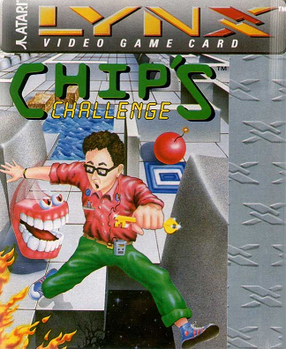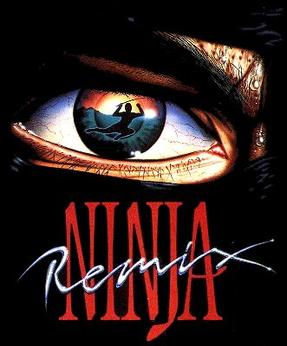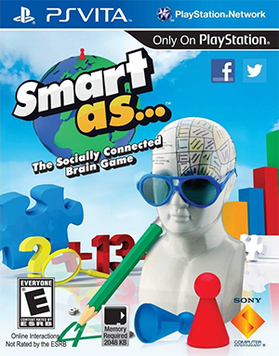
Media player software is a type of application software for playing multimedia computer files like audio and video files. Media players commonly display standard media control icons known from physical devices such as tape recorders and CD players, such as play, pause, fastforward (⏩️), rewind (⏪), and stop buttons. In addition, they generally have progress bars, which are sliders to locate the current position in the duration of the media file.

Pool of Radiance is a role-playing video game developed and published by Strategic Simulations, Inc (SSI) in 1988. It was the first adaptation of TSR's Advanced Dungeons & Dragons (AD&D) fantasy role-playing game for home computers, becoming the first episode in a four-part series of D&D computer adventure games. The other games in the "Gold Box" series used the game engine pioneered in Pool of Radiance, as did later D&D titles such as the Neverwinter Nights online game. Pool of Radiance takes place in the Forgotten Realms fantasy setting, with the action centered in and around the port city of Phlan.

Nonograms, also known as Hanjie, Paint by Numbers, Picross, Griddlers, and Pic-a-Pix are picture logic puzzles in which cells in a grid must be colored or left blank according to numbers at the edges of the grid to reveal a hidden picture. In this puzzle, the numbers are a form of discrete tomography that measures how many unbroken lines of filled-in squares there are in any given row or column. For example, a clue of "4 8 3" would mean there are sets of four, eight, and three filled squares, in that order, with at least one blank square between successive sets.

Chip's Challenge is a top-down tile-based puzzle video game originally published in 1989 by Epyx as a launch title for the Atari Lynx. It was later ported to several other systems and was included in the Windows 3.1 bundle Microsoft Entertainment Pack 4 (1992), and the Windows version of the Best of Microsoft Entertainment Pack (1995), where it found a much larger audience.

Beyond Zork is an interactive fiction computer game written by Brian Moriarty and released by Infocom in 1987. It was one of the last games in the Zork series developed by Infocom. It signified a notable departure from the standard format of Infocom's earlier games which relied purely on text and puzzle-solving: among other features, Beyond Zork incorporated a crude on-screen map, the use of character statistics and levels, and RPG combat elements.

Ascendancy is a 4X science fiction turn-based strategy computer game. It was originally released for MS-DOS in 1995 and was updated and re-released for iOS in 2011 by The Logic Factory. Ascendancy is a galactic struggle to become the dominant life form, hence the title. The game's introductory cinematic states: "Wildly different cultures competed for the same worlds. In the enormous upheaval that followed, one of these species would gain ascendancy."

Anticipation is a video board game developed by Rare and released by Nintendo for the Nintendo Entertainment System (NES) in 1988. It is playable in either single-player or multiplayer mode, with up to four players competing against each other and/or computer-controlled opponents.

Get the Picture is a children's game show that aired from March 18 to December 6, 1991, with repeats until March 13, 1993 on Nickelodeon. Hosted by Mike O'Malley, the show featured two teams answering questions and playing games for the opportunity to guess a hidden picture on a giant screen made up of 16 smaller screens. The show was recorded at Nickelodeon Studios in Universal Studios, Orlando, Florida. The program's theme music and game music was composed by Dan Vitco and Mark Schultz, and produced by Schultz. Its tagline is The Great Frame Game.

Brain Age: Train Your Brain in Minutes a Day!, known as Dr. Kawashima's Brain Training: How Old Is Your Brain? in PAL regions, is an edutainment puzzle video game. It was developed and published by Nintendo for the Nintendo DS. Nintendo has stated that it is an entertainment product inspired by Tohoku University professor Ryuta Kawashima's work in the neurosciences.

Last Ninja is a series of video games published by System 3. The first game in the series titled The Last Ninja, was released in 1987 for the Commodore 64 and was one of the most successful games for the system. In 1988, System 3 released Last Ninja 2, and in 1991 the third game in the series, Last Ninja 3. In 1990, Last Ninja Remix was released for 8-bit systems. This was Last Ninja 2 with new music, a new introductory sequence, slightly changed graphics and fixed bugs. Confusingly, the 16-bit versions of the original The Last Ninja game were also released in 1990 as Ninja Remix.

Challenge of the Ancient Empires!, also known as Ancient Empires is an educational computer game created by The Learning Company in 1990 for both MS-DOS and Macintosh. It is designed to improve history, logic, and problem solving skills in children ages 7 to 10.

Under Fire! is a tactical level computer game released by Avalon Hill's computer division in 1985. The game was released for Apple II, Commodore 64, and DOS systems. Initial packaging had the name of the designer, Ralph H. Bosson, over the title on the box front so as to read Ralph Bosson's UNDER FIRE!, but subsequent packaging replaced his name and read Avalon Hill's UNDER FIRE! instead. The C64 port was by Dyadic Software Associates.

Planet Puzzle League, known as Puzzle League DS in Europe, and as Panel de Pon DS in Japan, is a video game for the Nintendo DS handheld video game console in the Puzzle League Panel de Pon visual matching puzzle game series. In North America, Planet Puzzle League is part of the Touch! Generations brand; in Japan, Panel de Pon DS is marketed in the general Touch! brand. The publisher for the game is Nintendo, and the developer is Nintendo's second-party developer Intelligent Systems, creator of the original Panel de Pon and its cult classic English-language adaptation Tetris Attack. The game was released in Japan on April 26, 2007 in North America on June 4, 2007, and in Europe on June 29, 2007.

Picross DS (ピクロスDS) is a puzzle video game developed by Jupiter and published by Nintendo for the Nintendo DS handheld video game console. It is the second Picross game to be released by Nintendo in Europe and North America after Mario's Picross suffered a commercial failure in regions outside Japan, where many Picross games have been released for several Nintendo consoles. Like other Picross games, it presents the player with a series of nonogram logic puzzles to solve. It was first released in Japan, and was later released in North America, Europe and Australia.

Drowned God: Conspiracy of the Ages is a 1996 science fiction adventure game developed by Epic Multimedia Group and published by Inscape. The game propounds the conspiracy theory that all of human history is a lie and that the human race's development and evolution were aided by extraterrestrials. The player attempts to uncover the truth through the course of the game by traveling to a variety of different worlds, interacting with historical and fictional characters, and solving puzzles.

Beagle Bag is a collection of video games for the Apple II family of computers published in 1982 by Beagle Bros. It was released in unlocked and unprotected form and is now in the public domain.

Tangled Tales: The Misadventures of a Wizard's Apprentice is a computer game developed by Origin Systems in 1989 for the Apple II, MS-DOS, and Commodore 64.

Smart As... is a puzzle game for the PlayStation Vita. It was developed by Climax Studios and published by the XDev Studio Europe department of Sony Computer Entertainment. The game was released in North America on October 30, 2012, and Europe and Australia on October 31, 2012.

Through the Looking Glass, also known as Alice, is a 1984 video game written for the Apple Lisa and Apple Macintosh computers. Written by a member of the Lisa and Mac teams, Steve Capps, it was one of the earliest video games on the Mac platform, part of the only games disk officially sold by Apple Computer during that era.
Composite artifact colors is a designation commonly used to address several graphic modes of some 1970s and 1980s home computers. With some machines, when connected to an NTSC TV or monitor over composite video outputs, the video signal encoding allowed for extra colors to be displayed, by manipulating the pixel position on screen, not being limited by each machine's hardware color palette.



















